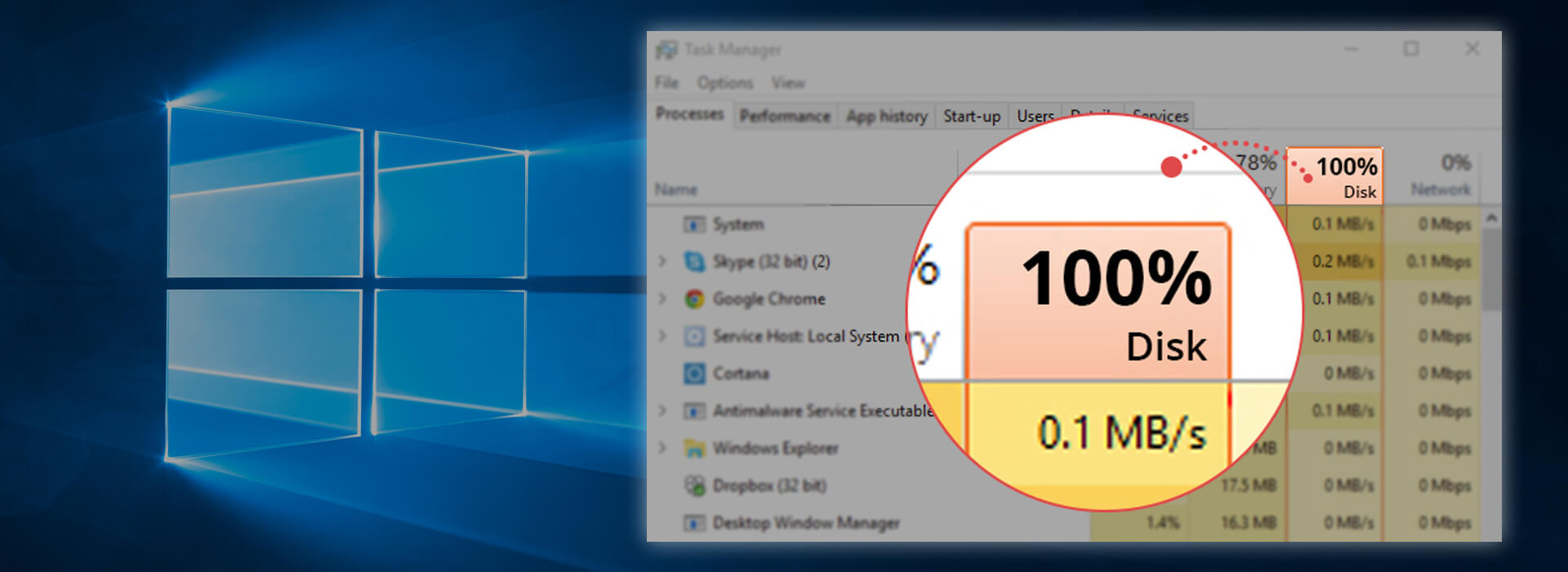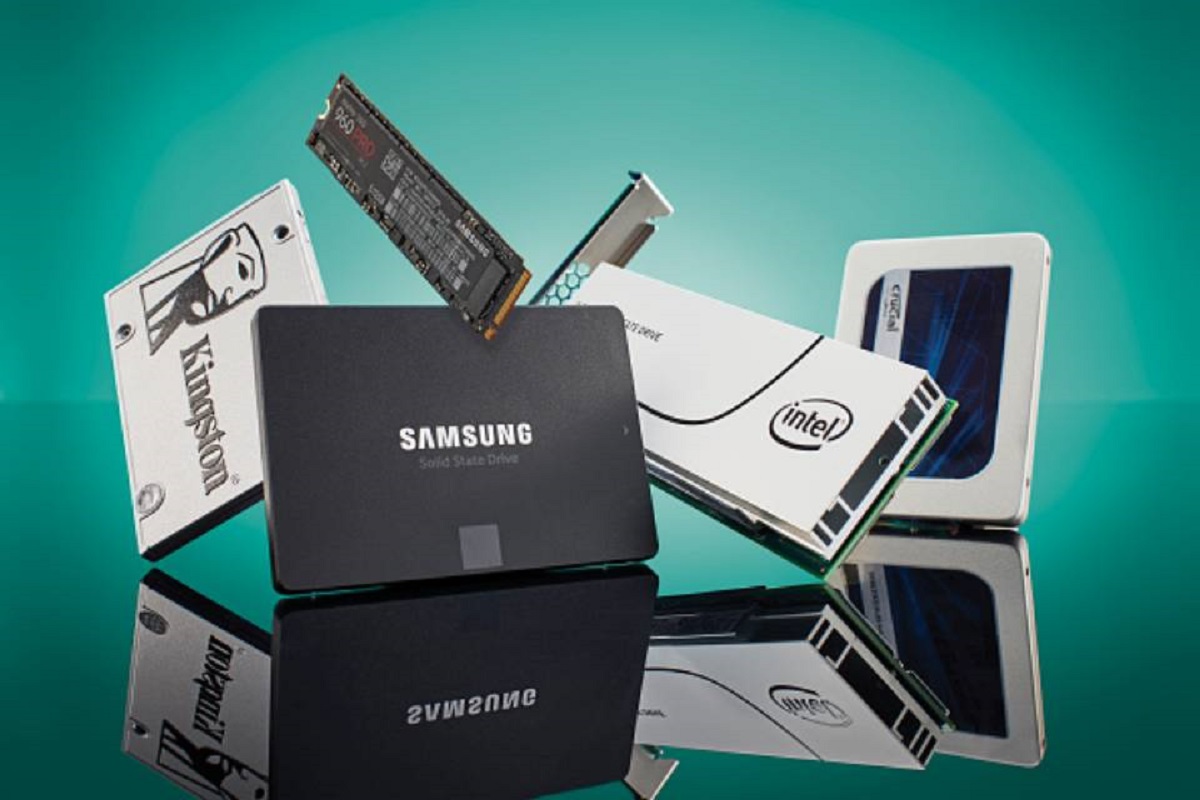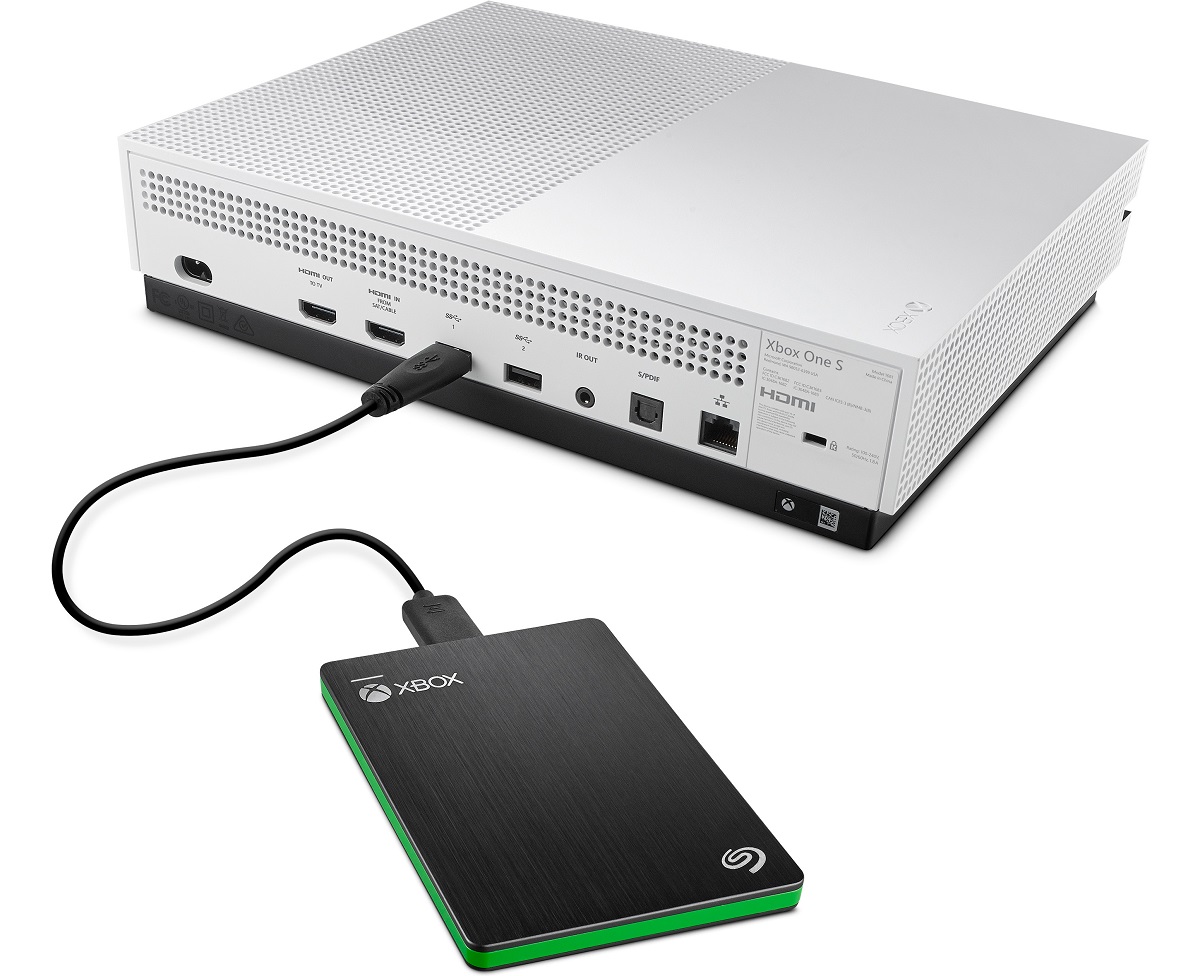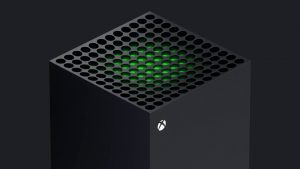Introduction
Welcome to the world of solid-state drives (SSDs), an innovative storage solution that offers faster data access and improved performance compared to traditional hard disk drives (HDDs). As technology advances, our data storage needs continue to grow, and it’s not uncommon for our SSDs to become full over time. In this article, we will explore what happens when your SSD is full, the impact on performance, and how to manage and clear your SSD storage.
When your SSD is nearing its capacity, it can affect your system’s functionality and overall user experience. It’s important to understand the causes of a full SSD and the potential consequences that can arise. By being proactive and implementing effective storage management strategies, you can ensure that your SSD operates smoothly and optimally.
Whether you use your computer for work, gaming, or personal use, a full SSD can hinder productivity and be frustrating. When your SSD is full, it can lead to slow boot-up and shutdown times, sluggish program responsiveness, freezing or crashing, difficulty in installing or updating software, and even potential data loss.
Fortunately, there are steps you can take to alleviate these issues and regain control of your SSD storage. By regularly checking your storage space, managing and clearing unnecessary files, and utilizing external storage options such as cloud storage or external hard drives, you can optimize your SSD’s performance and maintain sufficient space for your data storage needs.
In the following sections, we will delve deeper into the causes of a full SSD and its impact on performance. We will also explore various methods you can employ to check your SSD’s storage space, manage and clear storage, and ultimately avoid the pitfalls of a full SSD. Let’s jump right in and discover how to keep your SSD running smoothly and efficiently.
Causes of a Full SSD
There are several factors that can contribute to a full SSD. Understanding these causes can help you make informed decisions about managing your storage space effectively. Here are some common culprits:
- Large File Sizes: One of the main causes of a full SSD is the presence of large files. This can include high-definition videos, large software installations, or even large databases. These files can quickly consume significant amounts of storage space.
- Multiple Applications and Programs: Installing and running numerous applications and programs simultaneously can lead to a full SSD. Each program can require its own set of files, configurations, and temporary files, which can accumulate and take up valuable space over time.
- Unnecessary Files and Folders: Over time, your system can accumulate unnecessary files and folders. These can be remnants of old software installations, temporary files, or duplicates. They take up space without serving any purpose and contribute to a full SSD.
- Downloads and Browser Cache: When you browse the internet, your browser stores temporary files, images, and other data in the cache. Over time, these files can accumulate and consume a significant amount of storage space on your SSD.
- Media Files: Photos, videos, music, and other media files can quickly consume large amounts of storage space. If you have a substantial media collection, it is important to manage and organize these files to avoid a full SSD.
By identifying the causes of a full SSD, you can take proactive steps to manage your storage space effectively. In the next sections, we will explore the impact of a full SSD on performance and discuss various methods to check and clear your SSD’s storage. Let’s dive in and find out how a full SSD affects your system’s performance and ways to mitigate it.
Impact on Performance
A full SSD can have a significant impact on your system’s performance, leading to various issues that can hinder productivity and user experience. Understanding these impacts can help you address the problem effectively. Here are some common performance issues caused by a full SSD:
- Slow Boot-Up and Shutdown: When your SSD is full, your system’s boot-up and shutdown times might become noticeably slower. This is because the system needs to search through a cluttered storage space to retrieve the necessary files and configurations required to start or shut down your computer.
- Programs Running Slowly: A full SSD can result in sluggish program responsiveness. It can take longer for programs to load and execute tasks, leading to delays and frustration. This is especially noticeable for resource-intensive software such as video editing or gaming applications.
- Freezing or Crashing: If your SSD is overwhelmed with data and storage space is limited, it can cause your system to freeze or crash unexpectedly. This can result in loss of unsaved work and a disruptive user experience.
- Difficulty in Installing or Updating Software: Insufficient storage space can cause issues when you try to install new software or update existing programs. The process may fail, or you may receive error messages indicating that there is not enough space available.
- Difficulty in Saving Files: When your SSD is full, saving new files or modifications to existing files may become challenging. Your system might display error messages stating that the disk is full, preventing you from saving important work.
- Potential Data Loss: Perhaps the most concerning impact of a full SSD is the increased risk of data loss. When your storage space is limited, it is more likely that your system will encounter errors or corruption, potentially leading to permanent data loss.
These performance issues can have a negative impact on your productivity and user experience. However, with proper management and utilization of your SSD storage, you can mitigate these problems and ensure smooth system operation. In the next sections, we will explore how to check your SSD storage space, effectively manage and clear your storage, and restore optimal performance. Stay tuned!
Slow Boot-Up and Shutdown
One of the noticeable effects of a full SSD is a slow boot-up and shutdown process. When your SSD is nearing its capacity, it can take longer for your system to start up or shut down. This delay is mainly due to the increased time it takes for the operating system to locate and retrieve the necessary files and configurations from a cluttered storage space.
During the boot-up process, your computer goes through a series of tasks to initialize the hardware, load the operating system, and start essential background processes. If your SSD is full, the system may take longer to locate and access the necessary files and data, resulting in a slower boot-up time.
Similarly, when you shut down your computer, the operating system needs to save your work, close open applications, and perform other necessary tasks. If your SSD is full, the system might struggle to complete these tasks efficiently, leading to a slower shut down process.
To alleviate these issues and speed up your boot-up and shutdown times, it’s essential to manage your SSD’s storage space effectively. By clearing unnecessary files, organizing your data, and optimizing your system’s settings, you can improve overall performance and reduce the time it takes for your system to start up and shut down.
Additionally, if your computer has been running for a long time without a restart, it’s likely that temporary files and background processes have accumulated, further slowing down the boot-up and shutdown processes. Restarting your computer periodically can help clear these files and processes, improving performance.
Regularly monitoring and managing your SSD’s storage space not only speeds up boot-up and shutdown times but also contributes to overall system performance. In the next sections, we will explore methods for checking your SSD’s storage space and implementing strategies to effectively manage and clear your storage. Let’s continue our journey towards optimizing your SSD’s performance!
Programs Running Slowly
Another significant impact of a full SSD is the reduced responsiveness of programs and applications running on your computer. When your SSD’s storage space is almost full, it can affect the performance and speed at which software executes tasks.
Each program you run on your computer requires access to specific files, configurations, and temporary data stored on your SSD. If the SSD is nearing capacity, the system may experience delays in retrieving and accessing these files, resulting in slower program execution.
This slowdown can be especially noticeable when running resource-intensive applications such as video editing software, games, or complex data processing tools. These programs require significant amounts of disk space and can have numerous files and dependencies that need to be accessed quickly. When the SSD is full, it can cause delays in data retrieval and processing, resulting in decreased performance.
In addition to slower program execution, a full SSD can also cause programs to freeze or become unresponsive, leading to a frustrating user experience. The lack of available storage space can result in memory and disk errors, causing programs to halt or crash. This can lead to data loss and the need to restart the program or even the entire computer.
To overcome these issues and improve the performance of your programs, it is crucial to manage your SSD’s storage space effectively. Clearing unnecessary files, removing unused programs, and organizing your data can free up space and enhance the system’s ability to access and process files quickly.
It is also worth noting that the performance of your programs can be influenced by other factors, such as the amount of RAM installed in your computer and the overall hardware configuration. However, ensuring that your SSD has sufficient space and is properly managed plays a crucial role in optimizing program performance.
In the next sections, we will explore methods for checking your SSD’s storage space and discuss effective strategies to manage and clear your storage. By implementing these techniques, you can enhance the responsiveness of your programs and improve overall system performance.
Freezing or Crashing
When your SSD is full, one of the frustrating consequences can be frequent freezing or crashing of your computer system. A full SSD can put a strain on system resources and lead to instability and errors, resulting in unexpected system freezes or crashes.
When your computer freezes, it becomes unresponsive, and you are unable to perform any tasks. This can happen while using a specific program or even during regular system operation. The accumulation of unnecessary files, temporary data, and limited storage space can overwhelm the system’s resources, causing it to become overloaded and unresponsive.
In more severe cases, a full SSD can lead to system crashes, where the entire computer shuts down abruptly and restarts. This can result in not only the loss of unsaved work but also potential damage to system files and the operating system itself.
Various factors can contribute to the freezing or crashing of a full SSD system. Insufficient space on the SSD can affect the performance of critical system processes, leading to instability. Resource-intensive applications may consume more storage space and cause the system to become overwhelmed, resulting in unexpected crashes or freezes.
To mitigate these issues, it is essential to actively manage your SSD’s storage space and regularly clear unnecessary files and data. By freeing up space on your SSD, you can reduce the strain on system resources and improve system stability, reducing the likelihood of freezing or crashing.
Additionally, running regular system maintenance tasks, such as disk cleanup and system optimization, can help prevent freezing or crashing. These tasks can identify and remove temporary files, clean up system caches, and optimize system settings for better performance.
If you are experiencing frequent freezing or crashing, apart from managing your SSD storage space, it may also be worth considering upgrading your hardware components, such as increasing the RAM or replacing the SSD with a larger capacity one. These hardware upgrades can provide a more significant boost in system performance and stability.
In the following sections, we will explore methods for checking your SSD’s storage space and discuss effective strategies to manage and clear your storage. Stay tuned to learn how to prevent freezing or crashing and maintain a stable and efficient computer system!
Difficulty in Installing or Updating Software
When your SSD is full, you may encounter difficulties when trying to install new software or update existing programs on your computer. Insufficient storage space can hinder the installation or updating process and prevent you from utilizing the latest software features and improvements.
During the installation or update process, new files and data are added to your SSD, and existing files may undergo modifications or replacements. If your SSD is nearing capacity, there may not be enough free space to accommodate these changes, resulting in installation or update failures.
When you attempt to install new software, the installer typically checks for available disk space before proceeding. If there isn’t enough free space, you might receive an error message stating that there is insufficient storage to complete the installation.
Similarly, when updating programs, the update process requires temporary storage space to store and modify files. If your SSD is full, the update process may fail or encounter errors, preventing you from enjoying the latest features, bug fixes, and performance enhancements.
Difficulty in installing or updating software can impact your ability to use the latest applications or access important security patches and improvements. It may also limit your access to new features and compatibility updates, hindering your overall user experience.
To overcome the challenges of installing or updating software on a full SSD, it is crucial to manage your storage space effectively. This involves regularly removing unnecessary files, clearing temporary data, and uninstalling unused programs to create space for new installations and updates.
Additionally, you can consider utilizing external storage options, such as external hard drives or cloud storage, to store files or relocate rarely used applications. By moving less frequently accessed data off your SSD, you can free up space and alleviate the difficulties of installing or updating software.
In the upcoming sections, we will explore methods for checking your SSD’s storage space and discuss effective strategies to manage and clear your storage. By implementing these practices, you can overcome the obstacles of a full SSD and ensure smooth installation and updating processes for your software.
Difficulty in Saving Files
A full SSD can pose challenges when it comes to saving files on your computer. Insufficient storage space can lead to difficulties in saving new files or modifications to existing files, potentially hampering your productivity and causing frustration.
When your SSD is nearing capacity, your computer may display error messages indicating that there isn’t enough space available to save the file. This can be particularly frustrating when you’re working on important documents, projects, or media files that require immediate saving.
The lack of available space can also result in partial or corrupted file saves. If your SSD has limited free space, it might allocate the remaining storage to save part of the file, resulting in data loss or an incomplete or unusable file.
Additionally, the system’s performance can be affected when there is minimal storage space available for temporary files or caching. This can slow down the saving process, causing delays and impacting your workflow.
To overcome the difficulties in saving files, it is crucial to actively manage your SSD’s storage space. Regularly deleting unnecessary files and folders, moving large media files to external storage devices, or utilizing cloud storage options can help create space for new files.
Another solution is to consider changing the default saving location for certain types of files or applications to a larger-capacity drive or an external storage option. This can help ensure a smooth and hassle-free saving process without the limitations of a full SSD.
It is also important to develop a habit of organizing and categorizing your files effectively. By creating a logical file structure, you can easily identify and remove duplicate files or old versions, freeing up valuable storage space on your SSD.
Regularly monitoring your SSD’s storage capacity and taking proactive steps to manage it will not only prevent difficulties in saving files but also enhance the overall performance and lifespan of your SSD.
In the following sections, we will explore methods for checking your SSD’s storage space and discuss effective strategies to manage and clear your storage. Stay tuned to learn more about optimizing your SSD’s performance and ensuring hassle-free file saving!
Potential Data Loss
One of the most significant risks associated with a full SSD is the potential for data loss. When your SSD is nearing its storage capacity, it increases the likelihood of encountering errors, corruption, or even complete failure, leading to irreversible data loss.
Data loss can occur in several ways when your SSD is full:
- File Corruption: A full SSD can cause file corruption, especially if there is not enough space for the system to properly save and retrieve data. Corrupted files may become unreadable or unusable, resulting in permanent data loss.
- System Errors: When your SSD is overwhelmed with data, it can generate errors that impact the system’s stability and functionality. These errors can lead to unbootable systems, blue screens of death (BSOD), or other critical system failures, potentially resulting in data loss.
- Bad Sectors: A full SSD may increase the risk of developing bad sectors, which are physical regions of the SSD that are no longer capable of storing data. Once a sector becomes bad, the data within it may become inaccessible or unreadable.
- Unable to Create Backups: Insufficient storage space on your SSD can make it challenging to create backups of essential files or system images. Without proper backups, you expose yourself to a higher risk of permanent data loss in case of hardware failure or other catastrophic events.
It is crucial to take proactive measures to minimize the risk of data loss. Regularly backing up your important files and data to external storage devices or utilizing cloud storage services can help safeguard your data in case of SSD failure or other unforeseen circumstances.
Another essential step in preventing data loss is to regularly monitor and manage your SSD’s storage space. By clearing unnecessary files, organizing your data, and maintaining a healthy amount of free space on your SSD, you can reduce the risk of encountering data loss due to hardware or data integrity issues.
Remember that prevention is key when it comes to data loss. Proactively managing your SSD’s storage capacity and implementing effective backup strategies are crucial practices in safeguarding your valuable data.
In the upcoming sections, we will explore methods for checking your SSD’s storage space and discuss effective strategies to manage and clear your storage. Stay with us to learn how to protect your data and optimize your SSD’s performance!
How to Check SSD Storage Space
Checking your SSD’s storage space is essential to understand how much free space you have available and identify if your SSD is nearing its capacity. Fortunately, there are several methods you can use to check the storage space on your SSD:
- File Explorer: One of the easiest ways to check your SSD storage space is by using File Explorer (Windows) or Finder (Mac). Open the respective file manager, right-click on the SSD drive, and select “Properties” (Windows) or “Get Info” (Mac). This will display detailed information about the SSD, including the total capacity, used space, and available free space.
- System Settings: On both Windows and Mac operating systems, you can also check your SSD’s storage space through the system settings. In Windows, go to “Settings > System > Storage” to view a breakdown of your storage usage. On a Mac, navigate to the Apple menu, click on “About This Mac,” and then select the “Storage” tab.
- Third-Party Software: There are various third-party software applications available that can provide more detailed information about your SSD’s storage space. Applications like WinDirStat (Windows) and DaisyDisk (Mac) help visualize disk usage, displaying a graphical representation of files and their sizes on your SSD.
- Command-Line Tools: If you prefer using command-line tools, you can check your SSD’s storage space using commands like “df” (Unix/Linux-based systems) or “diskutil info” (Mac). These commands provide detailed information about disk usage, including total, used, and available space.
By regularly checking your SSD’s storage space, you can stay aware of how much free space is available and take necessary actions to manage it effectively. When you identify that your SSD is getting full, it’s a good indication that it’s time to clear unnecessary files, organize your data, or consider external storage options.
In the following sections, we will explore effective strategies for managing and clearing your SSD’s storage space, enabling you to maintain optimal performance and avoid the negative impacts of a full SSD. So, let’s dive into the next section and discover how to effectively manage your storage!
Managing and Clearing SSD Storage
Effectively managing and clearing your SSD’s storage is crucial to maintain optimal performance and avoid the negative impacts of a full SSD. Here are some effective strategies to help you keep your SSD organized and free up valuable storage space:
- Delete Unnecessary Files and Folders: Regularly go through your files and folders to identify and delete unnecessary or obsolete files. Remove duplicates, old documents, and files you no longer need. Be mindful of large files that might be taking up significant space and consider deleting them if they are no longer essential.
- Move Files to External Storage: If you have files that you don’t frequently access but need to keep, consider moving them to an external storage device, such as an external hard drive or a network-attached storage (NAS) device. This helps free up space on your SSD while still keeping your files accessible when needed.
- Utilize Cloud Storage: Cloud storage services like Google Drive, Dropbox, or OneDrive offer convenient ways to store your files offsite. Upload files that you don’t need immediate access to and rely on these cloud services to free up space on your SSD. Just ensure you have a reliable internet connection for seamless file access.
- Uninstall Unused Programs: Go through your installed programs and uninstall any you no longer use or need. Unused programs not only take up storage space but can also impact system performance. Use the built-in uninstaller or a third-party uninstaller tool to ensure complete removal.
- Utilize Disk Cleanup Tools: Both Windows and Mac operating systems provide built-in disk cleanup tools. These tools can help you identify and delete temporary files, system caches, and other unnecessary data, freeing up valuable space on your SSD. Run these tools regularly to keep your SSD clean.
- Organize your Data: Take the time to organize your files into logical folders and subfolders. Use a consistent naming convention and consider using tags or labels to easily locate files in the future. A well-organized file structure can make it easier to identify and manage unnecessary files.
By implementing these strategies and making them a part of your regular SSD management routine, you can ensure that your SSD remains optimized and performs at its best. Regularly check your storage space, remove unnecessary files, and utilize external storage options to maintain sufficient free space.
In the upcoming sections, we will delve deeper into each of these strategies and provide specific tips and techniques to help you effectively manage and clear your SSD’s storage space. So, let’s move on and explore the details of each approach!
Deleting Unnecessary Files and Folders
One of the most straightforward and effective ways to manage your SSD’s storage space is by deleting unnecessary files and folders. This process involves identifying and removing files that are no longer needed, thus freeing up valuable space on your SSD. Here are some tips to help you effectively delete unnecessary files and folders:
- Regular Cleanup: Make it a habit to regularly perform a cleanup of your SSD. Set aside dedicated time to go through your files and folders, identifying and deleting those that are no longer necessary.
- Duplicate Files: Duplicate files can take up a significant amount of storage space. Utilize duplicate file finders or manual methods to identify and remove duplicate files, such as photos, documents, or music files.
- Old and Unused Documents: Scan through your documents folder and delete any outdated or unused files. These may include old spreadsheets, presentations, or word documents that are no longer relevant.
- Downloads Folder: The downloads folder can accumulate a large number of files over time. Delete files that you no longer need, such as installation files for programs that have already been installed.
- Temporary Files: Temporary files are created by applications and can take up space on your SSD if not properly managed. Use the built-in disk cleanup tools (such as Disk Cleanup on Windows or Optimized Storage on Mac) to remove temporary files safely.
- Uninstall Unneeded Software: Review the programs installed on your computer and uninstall any that you no longer use or need. This not only frees up storage space but also helps improve system performance.
Deleting unnecessary files and folders not only clears up space on your SSD but also helps you stay organized and find important files more easily. Consider creating a backup of important files before deleting them to avoid any accidental data loss.
Remember, managing your SSD’s storage space is an ongoing process. Performing regular cleanups and staying vigilant about removing unnecessary files will help keep your SSD optimized and ensure that you have sufficient space for the files and applications you need.
In the next section, we will explore another method for managing your SSD’s storage space: moving files to external storage. Keep reading to learn more about this effective strategy!
Moving Files to External Storage
When your SSD is running out of space, an effective strategy to free up storage is to move files to external storage devices. By offloading files to external hard drives or cloud storage services, you can create more space on your SSD without permanently deleting the files. Here are some tips for effectively moving files to external storage:
- Identify Files to Move: Begin by identifying files that you don’t frequently access or that are taking up a large amount of space on your SSD. This can include old media files, large folders, or documents that you don’t need immediate access to.
- External Hard Drives: External hard drives provide a convenient way to move and store large files or entire folders. Connect an external hard drive to your computer, copy and paste the files or folders you want to move onto the external drive, and ensure they are safely transferred before deleting them from your SSD.
- Cloud Storage Services: Utilize cloud storage services such as Google Drive, Dropbox, or OneDrive to store files offsite. These services allow you to upload files to the cloud and access them from any device with an internet connection. Move files or folders to your cloud storage and ensure they are synced before removing them from your SSD.
- Backup Considerations: When moving files to external storage, it’s essential to consider backup practices. Always maintain an additional backup of your important files in case of hardware failure or other unforeseen events.
- Organize External Storage: As you move files to external storage, maintain an organized file structure to easily locate files when needed. Create folders and subfolders, and use descriptive naming conventions to keep your files organized.
- Regular Maintenance: Periodically review the files on your external storage devices and delete any unnecessary files to keep the external storage organized and efficient.
Moving files to external storage not only frees up valuable space on your SSD but also ensures that your files are safe and accessible when required. Remember to regularly backup important files stored on external devices to prevent data loss.
By utilizing external storage options effectively, you can have more control over your SSD’s storage space and keep your system running smoothly. In the next section, we will explore another useful method for managing your SSD’s storage: utilizing cloud storage services. Let’s dive in!
Utilizing Cloud Storage
When managing your SSD’s storage space, utilizing cloud storage services can be a valuable strategy. Cloud storage allows you to store your files securely on remote servers, accessible from any device with an internet connection. Here are some tips for effectively utilizing cloud storage:
- Select a Reliable Cloud Storage Provider: Choose a reputable cloud storage provider that offers the features and storage capacity you need. Popular options include Google Drive, Dropbox, Microsoft OneDrive, and iCloud.
- Upload Files to the Cloud: Begin by uploading files and folders to your chosen cloud storage service. Most providers offer a desktop app or a web interface that allows you to easily drag and drop files for upload.
- Organize Files and Folders: Create a logical structure within your cloud storage, organizing files and folders in a way that makes sense to you. Consider using descriptive file names and categorizing files into appropriate folders.
- Sync Files Across Devices: Take advantage of the sync capabilities offered by cloud storage services. This allows you to access your files from multiple devices, ensuring you have the most up-to-date versions at your fingertips.
- Access Files on Demand: With cloud storage, you don’t need to keep all your files stored locally on your SSD. Instead, you can download files as needed, freeing up space on your SSD for files you use frequently.
- Enable Automatic Backups: Many cloud storage providers offer automatic backup functionality. Set up automatic backups of specific folders or files to ensure your important data is always protected.
- Consider Encryption and Security: If you have sensitive or confidential files, consider using the encryption options provided by your cloud storage service. This adds an extra layer of security to your files, protecting them from unauthorized access.
- Regularly Review and Clean Up: Periodically review your cloud storage and delete any unnecessary files or folders. This helps keep your cloud storage organized and prevents it from becoming cluttered.
Utilizing cloud storage not only helps free up space on your SSD but also provides an added layer of accessibility and security for your files. By using cloud storage effectively, you can maintain a more streamlined and efficient storage system.
In the next section, we will explore another important aspect of managing your SSD’s storage space: uninstalling unused programs. Keep reading to learn more about this strategy!
Uninstalling Unused Programs
Uninstalling unused programs is a crucial step in managing your SSD’s storage space effectively. Over time, you may accumulate a significant number of programs on your computer that you no longer use or need. Uninstalling these unused programs can help free up valuable storage space on your SSD. Here are some tips for uninstalling unused programs:
- Review Installed Programs: Take the time to review the list of installed programs on your computer. Access the “Add or Remove Programs” or “Programs and Features” section in the Control Panel (Windows) or the Applications folder (Mac) to see a comprehensive list of installed programs.
- Identify Unused Programs: Identify programs that you no longer use or need. Consider whether you can access the same functionality through alternative means or if the program serves a purpose that you no longer require.
- Check Last Use Date: Look at the last time you used each program. If it has been months or even years since you last opened it, it is likely a good candidate for uninstallation.
- Read Program Descriptions: Read the descriptions of the programs you’re unsure about. Determine if they are essential system utilities, bundled software, or programs that you genuinely need. Often, there will be programs that you may not recognize, and it’s essential to research their purpose and uninstall them if unnecessary.
- Uninstall from Control Panel: Use the built-in uninstallation feature provided by your operating system. On Windows, go to the Control Panel and select “Add or Remove Programs” or “Programs and Features.” On Mac, open the Applications folder and drag the unwanted program to the Trash or use an uninstaller app.
- Use Third-Party Uninstallers (Optional): If you’re having trouble uninstalling certain programs or want to ensure complete removal, consider using third-party uninstaller tools. These tools can help remove leftover files and registry entries associated with the uninstalled programs.
- Review and Repeat: Regularly review your installed programs and repeat the uninstallation process as needed. As you install new programs, periodically reassess their usefulness and remove any that are no longer necessary.
Uninstalling unused programs not only frees up storage space but also helps improve system performance. Each installed program takes up disk space and may run background processes that consume system resources. By removing these unnecessary programs, you can optimize your SSD’s performance and ensure that your computer runs smoothly.
In the next section, we will explore another method for managing your SSD’s storage space: utilizing disk cleanup tools. Keep reading to learn more about this effective strategy!
Using Disk Cleanup Tools
Utilizing disk cleanup tools is an effective way to manage your SSD’s storage space and optimize system performance. These built-in tools help you identify and remove unnecessary files, temporary data, and system caches that are taking up valuable storage space. Here’s how to use disk cleanup tools on different operating systems:
- Windows: Windows provides a built-in disk cleanup tool that can help you identify and remove unnecessary files. To access it, go to the Start menu, search for “Disk Cleanup,” and launch the application. Select the drive you want to clean and let the tool analyze your SSD for potential cleanup. It will present a list of file categories that you can select to delete, including temporary files, system files, and more.
- Mac: On macOS, you can utilize the Optimized Storage feature to perform a cleanup of your SSD. Go to the Apple menu, select “About This Mac,” then click on “Storage.” From there, you can click on the “Manage” button, and macOS will guide you through various options to optimize your storage, such as removing unnecessary files, emptying the Trash, and reviewing large files.
- Third-Party Disk Cleanup Tools: Additionally, you can opt for third-party disk cleanup tools that provide more advanced features and options. These tools often offer more control over the cleanup process and can help identify hidden or deep-rooted unnecessary files, temporary data, and caches. Popular third-party options include CCleaner (Windows) and CleanMyMac (Mac).
Using disk cleanup tools helps you remove temporary files, system caches, old system backups, and other unnecessary files that may be taking up significant space on your SSD. By regularly cleaning up these files, you can reclaim storage space and improve overall system performance.
It’s important to note that when using disk cleanup tools, you should verify the files and categories you select for deletion to ensure that you are not removing any critical or needed data. Carefully review the options provided by the tool and exercise caution while selecting the files to delete.
In the next section, we will explore the importance of regularly managing your SSD’s storage space and implementing these strategies as part of your routine maintenance. Keep reading to discover the benefits of proactive storage management!
Conclusion
Managing your SSD’s storage space is essential for maintaining optimal performance and ensuring a smooth user experience. When your SSD becomes full, it can lead to various performance issues such as slow boot-ups, program responsiveness, freezing, and difficulty in installing or updating software. Additionally, a full SSD increases the risk of potential data loss, which can be devastating for important files and documents.
Fortunately, there are several effective strategies for managing and clearing your SSD’s storage space. By deleting unnecessary files and folders, moving files to external storage, utilizing cloud storage services, uninstalling unused programs, and using disk cleanup tools, you can free up valuable space and optimize your SSD’s performance.
Regularly checking your SSD’s storage space is crucial in identifying when it’s nearing capacity. By utilizing built-in tools like File Explorer or Finder, system settings, or third-party applications, you can stay aware of your storage usage and take necessary actions to manage it effectively.
Implementing proactive storage management as part of your regular maintenance routine will help you avoid the negative consequences of a full SSD. By regularly reviewing your files, organizing data, and removing unnecessary applications, you can keep your SSD clean and efficient.
Remember to backup your important files before making any changes to your SSD’s storage space. This ensures that your valuable data is protected in case of hardware failure or accidental deletion.
In conclusion, managing your SSD’s storage space is crucial for maintaining performance and ensuring a smooth computing experience. By implementing effective strategies and regularly monitoring your storage usage, you can optimize your SSD’s performance, prevent data loss, and enjoy a more streamlined and efficient system.

























